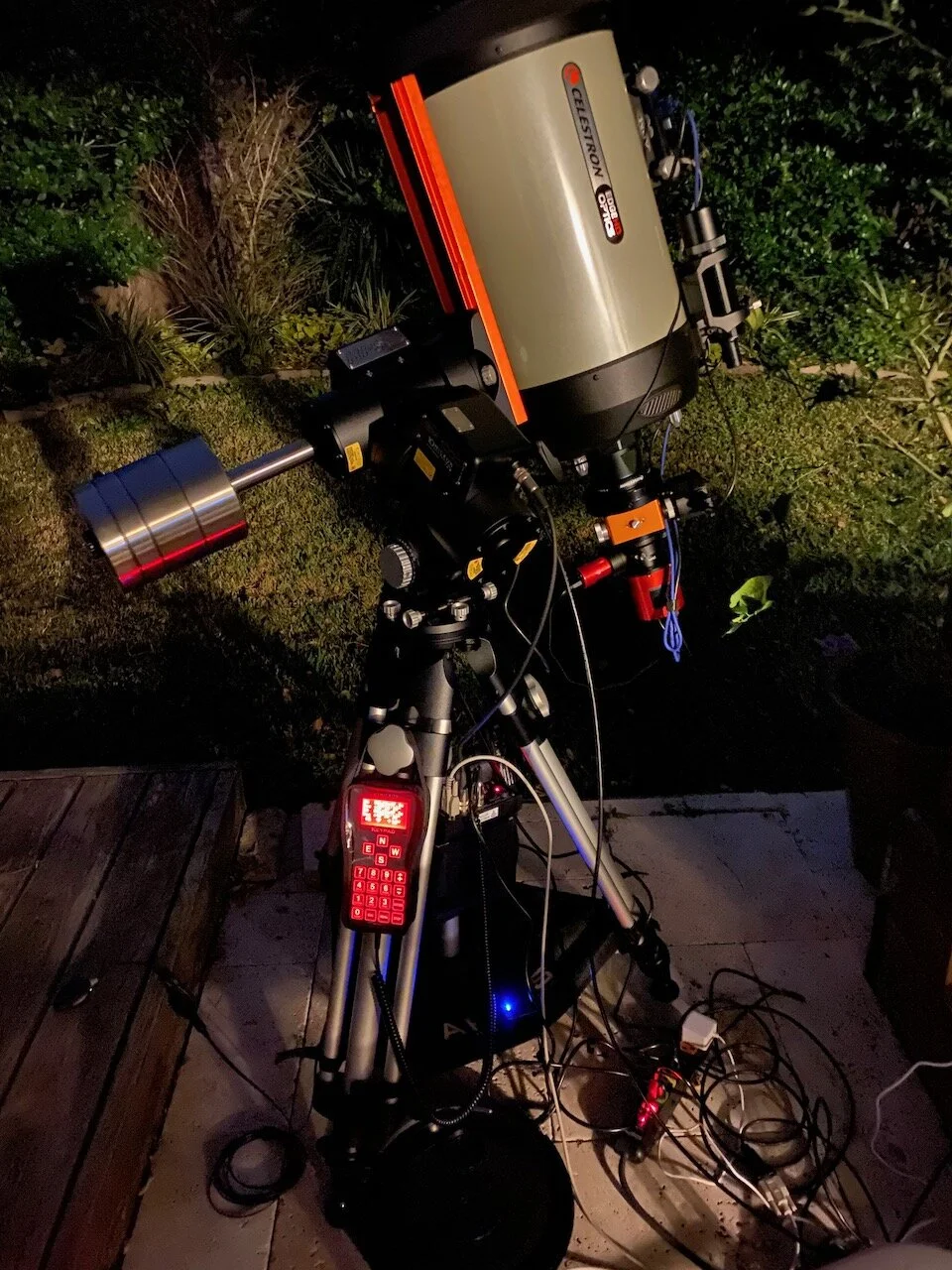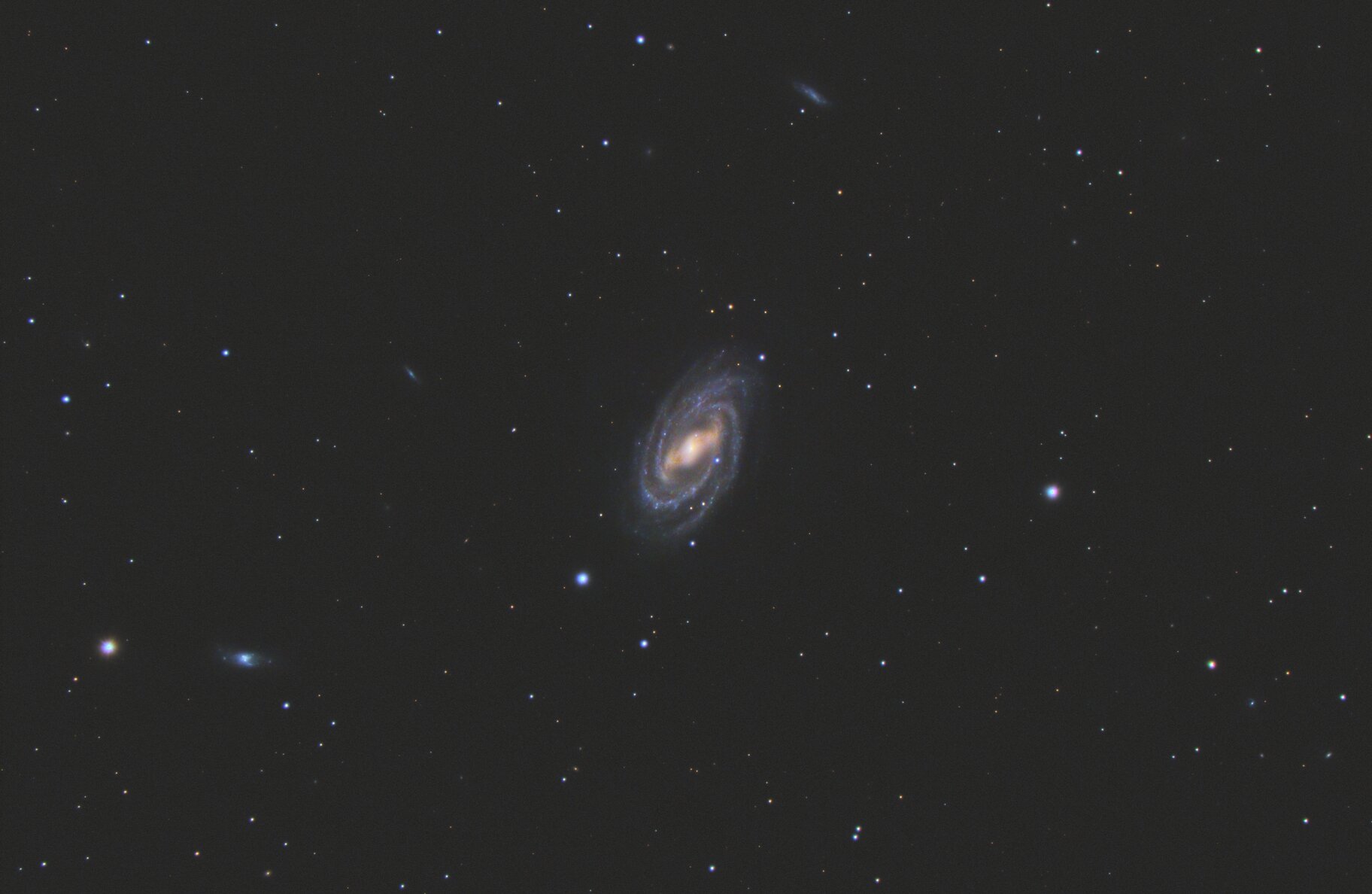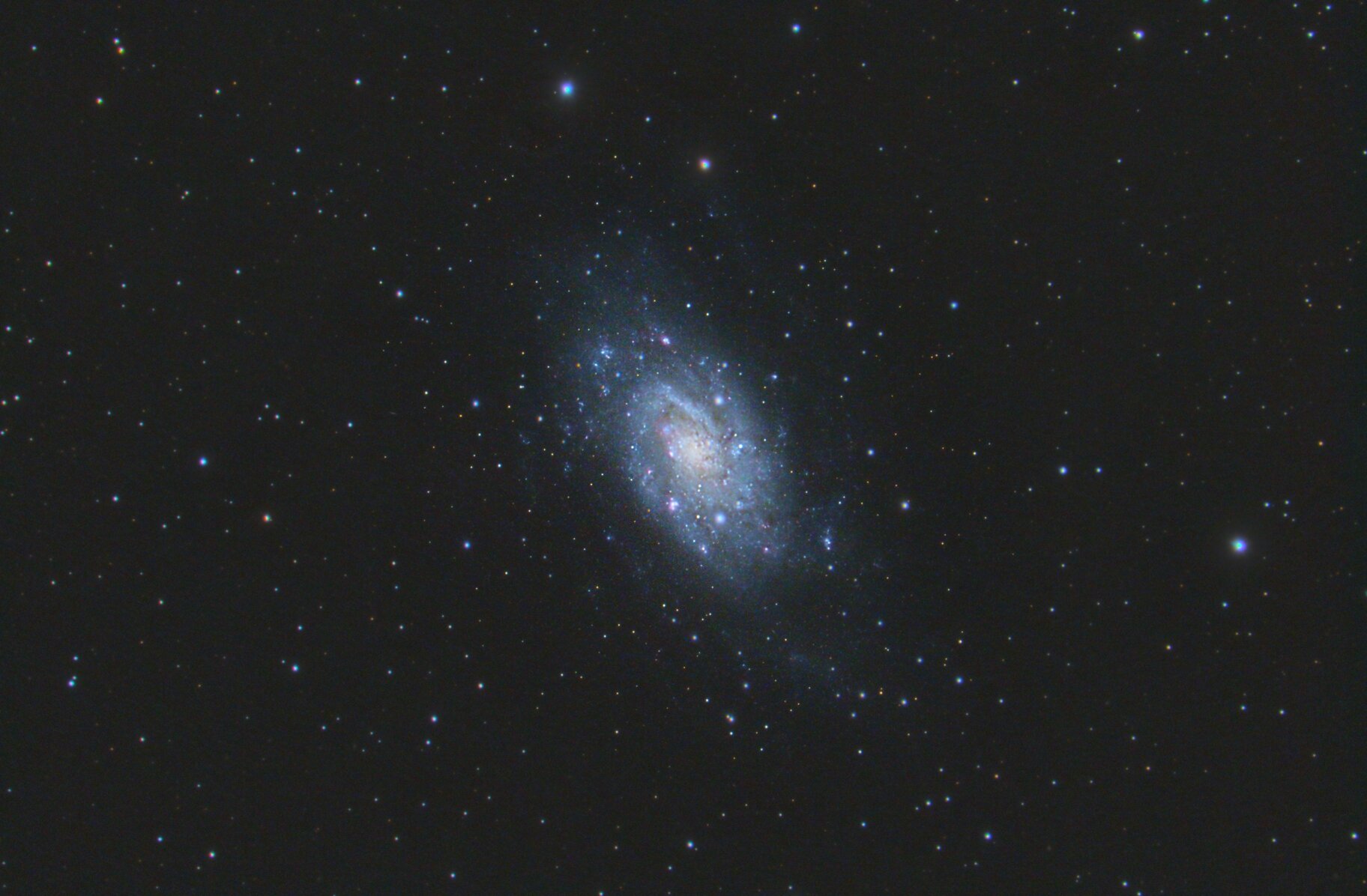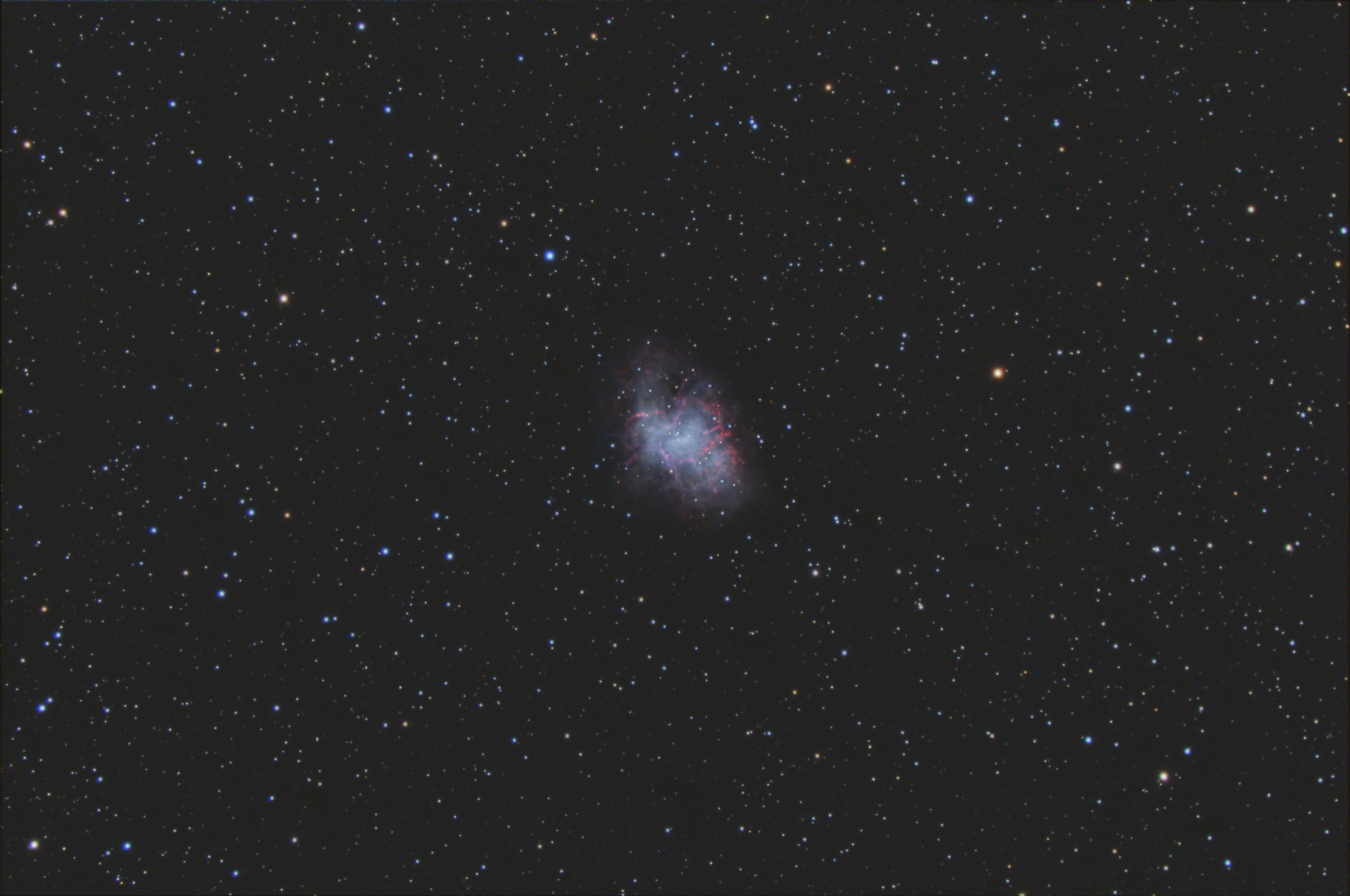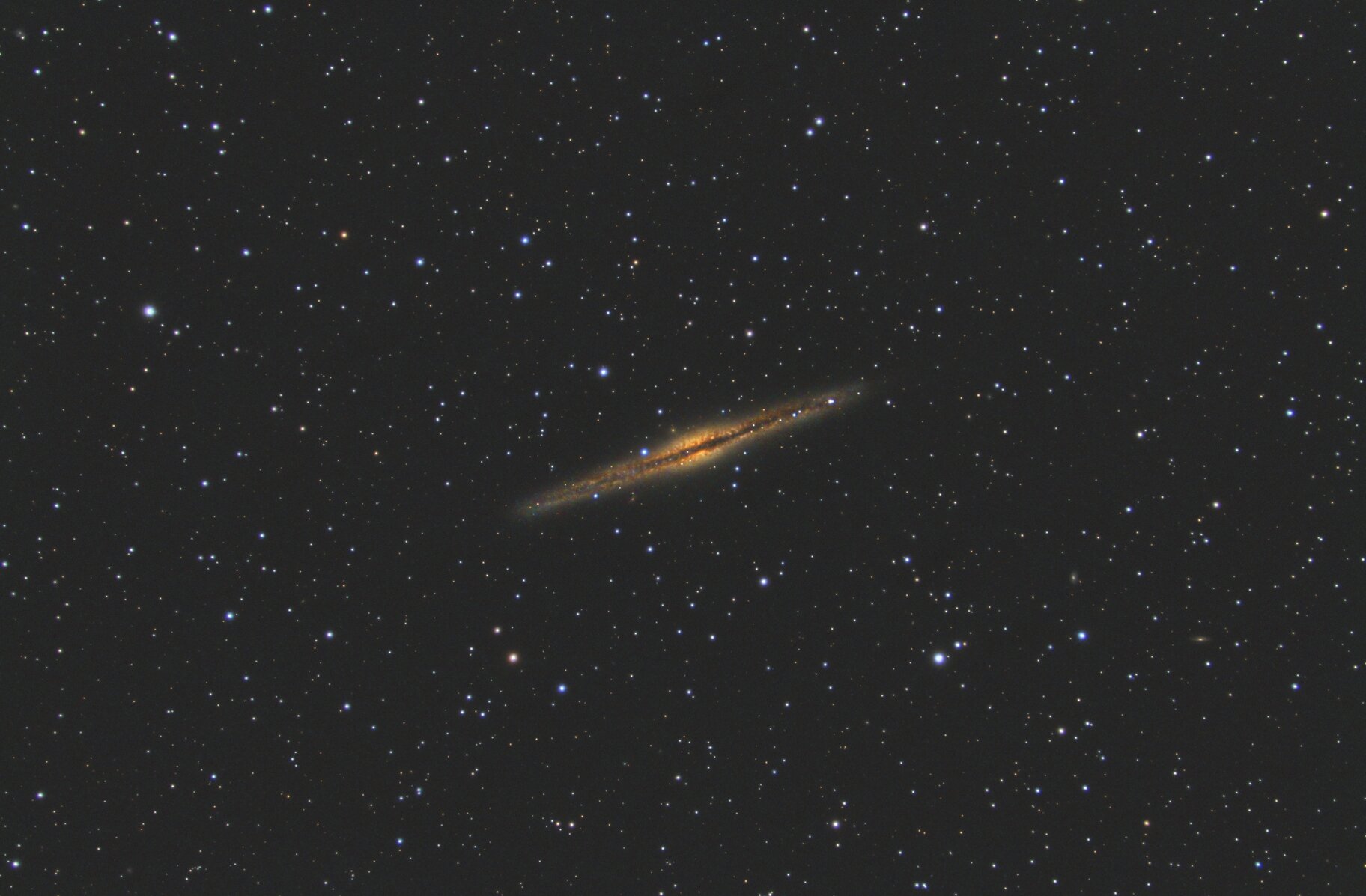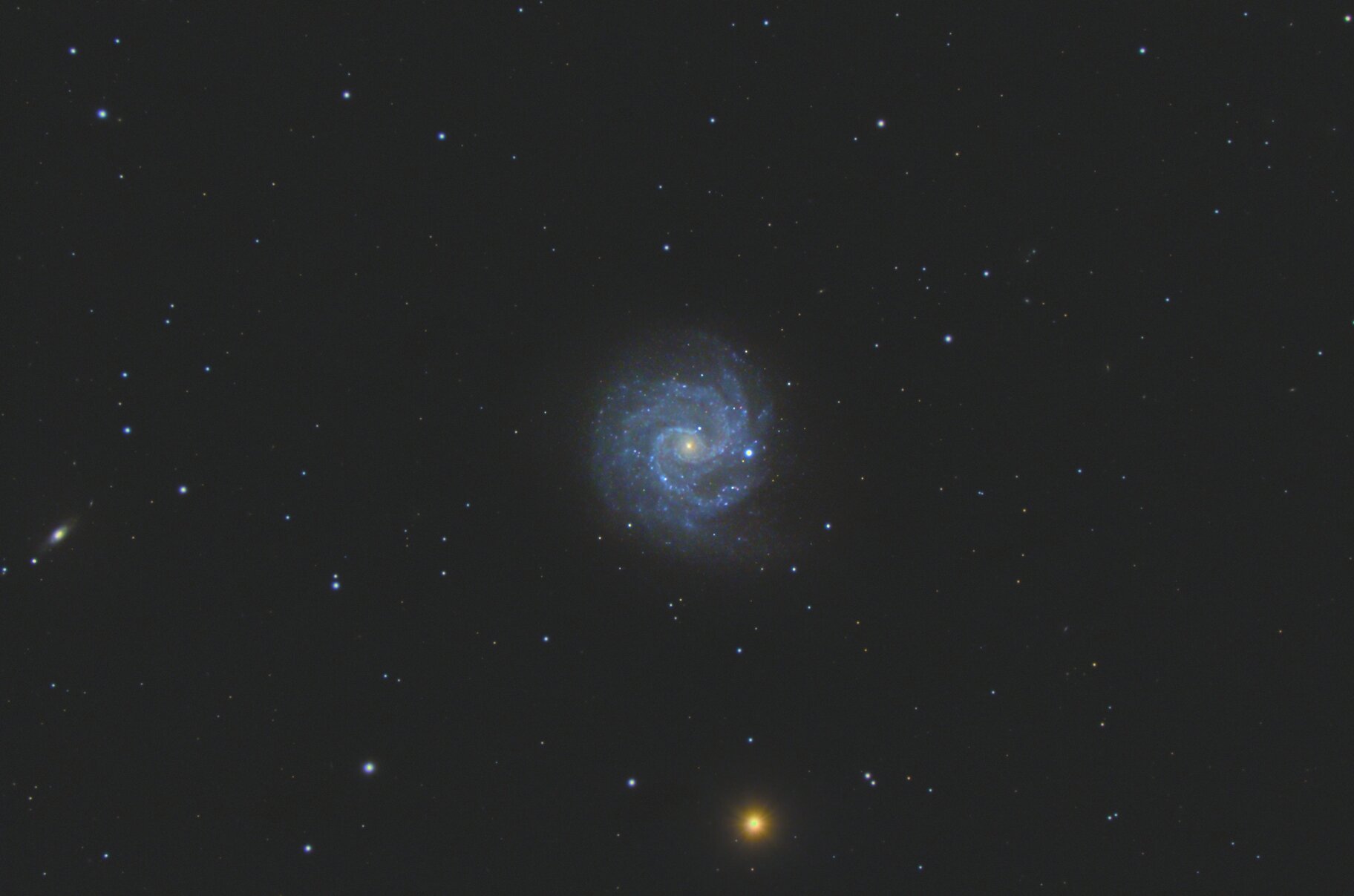Unfortunately my back yard neighbor installed a small ‘sun’ as their back porch light.
Late last year as galaxy season began to start, I got out my EdgeHD 11 scope to start shooting those small targets. I had been using the Celestron CGX for almost a year at that point, but hadn’t used it very much with my Edge. I was finding it difficult to get perfectly round stars, especially in the RA axis. Guiding was always worse in this one axis on my CGX. And if you do a search on the internet for CGX and RA axis, you’ll see a whole bunch of people with the same issue. I was able to mitigate it some in a bunch of my images by using some de-blurring features in photoshop where you can remove motion blur in a single direction. But, you can tell it was not perfect. Long story short, this seems to be an intrinsic issue for a lot of CGX owners, and I didn’t want to rip apart the mount and try to fix it myself. So, I sold it online to recoup any costs I could, and the next owner was happy to have it for visual where these tiny tracking errors wouldn’t show up.
So, as you can see by the photo, I purchased a 10Micron GM1000 HPS mount. I researched a bunch, over on cloudynights.com. I strongly considered a bunch of different options including an Astrophysics Mach2 (which had an extremely long wait list), Paramount MyT, as well as the GM1000. Ed from Deep Space Products contacted me after reading one of my posts, and after answering a lot of my questions, swayed me to go with the GM1000. Ed shipped it out and in a matter of days I had it set up and running. Unfortunately as luck would have it in this hobby, I started to experience some strange electrical problems with the mount only when the DEC motor was operating. This is very unusual to have any issues in these mounts as they’re throughly tested before leaving the manufacturing plant. The problem I experienced only came about during temperature drops which explained why it wasn’t caught in testing. Through Ed’s direct support (late night phone calls) he walked me through a bunch of trouble shooting, and I eventually shipped the mount head back to him at no charge to me. He reseated all the electrical plugs (that were internal) and the problem disappeared for him. Just to be sure they replaced the DEC motor/encoder assembly. Ed tested for another week, and it seemed all clear, so he shipped it back to me. It’s been working flawlessly ever since.
Some galaxy images done on the new mount.
The most surprising thing to me with the new mount is how fast and silent it is. It slings the Edge around like it’s nothing. If you weren’t careful, you could knock yourself out. In addition to the speed, it’s highly accurate. With encoders on both axis, it can correct for wind gusts, bumps, or I could even unlock the clutches and move it around and it would still know the position it’s pointed. Guiding is unnecessary as it tracks below .2 arc second error with the encoders.
Tracking error measured by 10Micron.
In addition to the mount, I decided to swap out my AT6RC telescope for an 8” RC. I sold the 6” through the classifieds on cloudy nights. And picked up a used 8”. I was able to swap out the Moonlite focuser from my 6” as the flange size is the same. I have really only used it for one image, as the larger size started to have dew problems and I didn’t have a dew shield. Got those ordered, but have not tried the scope again. The larger size scope puts it more evenly between the Edge 11 and my 102mm refractor for focal length, giving me a better overall range of scope focal lengths.
Lastly, towards the end of the year ZWO has released a handful of new cameras based on newer sensor technology. Since I’ve been using my color camera (ZWO ASI071) on the EdgeHD, and have always had temperature cooling and icing issues with it in the high humidity of Houston, I wanted to get a replacement. ZWO’s new full frame mono sensors were very enticing, but expensive. Once you purchased filter wheel, new OAG, and filters with the camera, you’re looking at about 10k. So I opted for their less expensive color camera, which is an APSc sized version of the same chip. I got the ZWO ASI2600MC-Pro just after the new year started. While I have been imaging successfully with the 071, I intend on selling it. The new camera features a full front window dew heater, better cooling system, and much more sensitive sensor.
Size comparison between the new and old camera. The ASI2600 is significantly larger.
I have yet to make first light with the new camera. As luck would have it…cloudy nights, and of course during the first clear night, I’m under the weather myself. Looks like another week of waiting. But this year will be exciting for me as I learn the new camera and gear.

